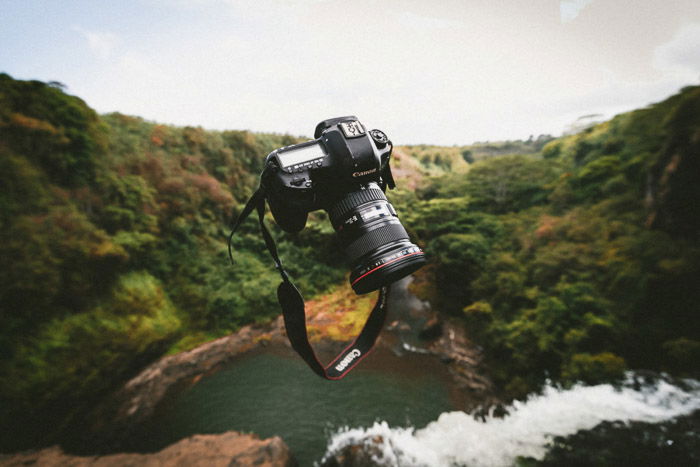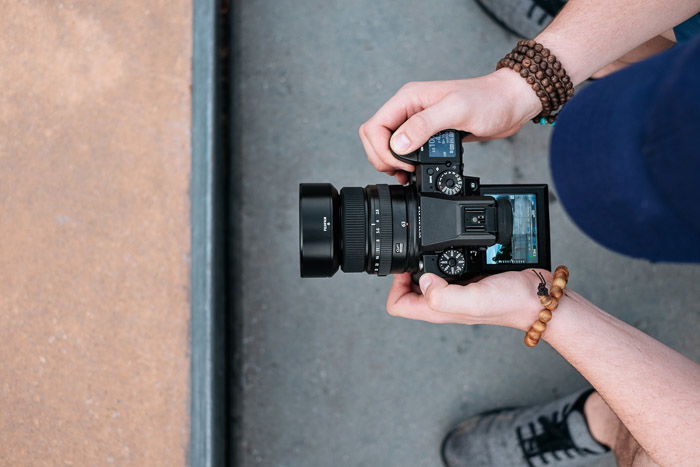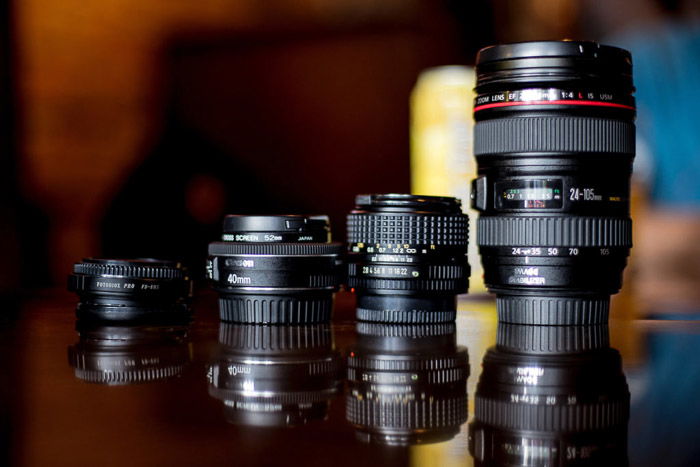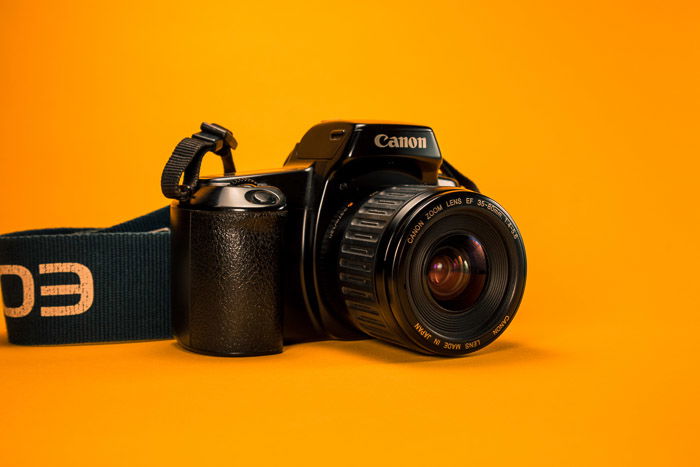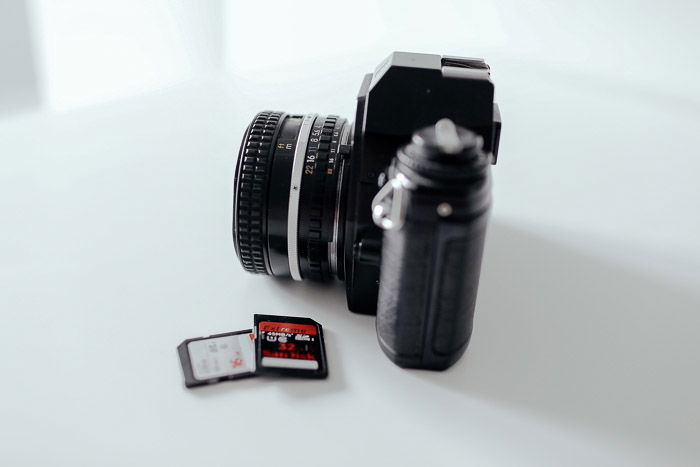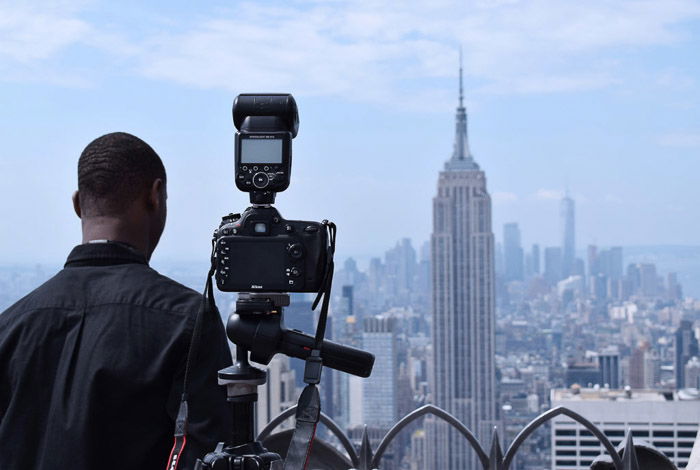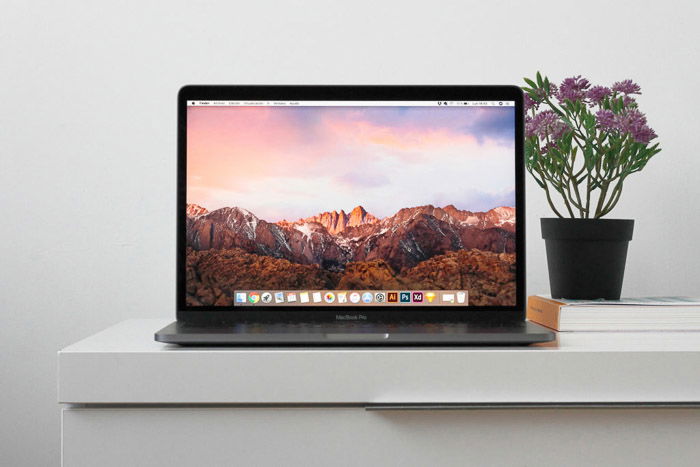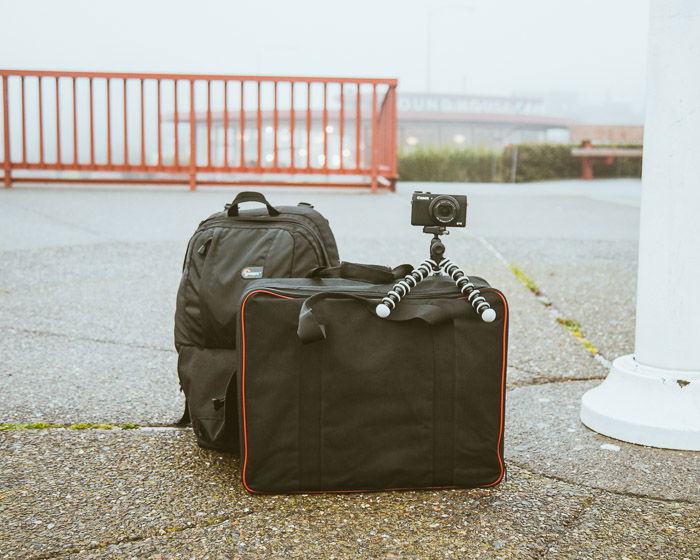[ExpertPhotography is supported by readers. Product links on ExpertPhotography are referral links. If you use one of these and buy something, we make a little bit of money. Need more info? See how it all works here.]
Photography Essentials: What Equipment Do I Need for Photography?
There are tons of essential tools and accessories you can buy when it comes to photography. But we’ll focus on the ones that you will need to get into this hobby. So what should a beginner photographer buy? Of course, the top priority is the camera body. But you will also need lenses, memory cards, tripods, and a few more accessories. In this article, we’ll discuss some of the best options for beginners like you.
Camera Body
Figuring out which camera you should buy is anything but easy. You can get started with a $500 camera or a $2,000 one. That pricier camera will have more features and probably last you longer. But it can be daunting to get started on advanced photography cameras with controls designed for pros, not newbies. Here’s what to keep in mind before you got to the cameras store.
Mirrorless, DSLR or Advanced Compact
Start your search for digital cameras by narrowing down the category that best suits your type of photography. There are more than three categories of digital cameras. But DSLRs, mirrorless cameras, and advanced compacts have the most features for anyone who wants to get serious about photography. If you want to get serious about photography, then DSLRs are the best option. They not only have all the advanced features, but they also have large sensors and swappable lenses. But they are bulkier than mirrorless cameras.
Mirrorless cameras are the DSLR’s lighter weight sibling. Most mirrorless cameras available today can shoot right alongside a DSLR in many scenarios. But the entry-level Best Buys cameras tend to be a little higher priced than an entry-level DSLR.
Advanced compacts are the “point-and-shoot” cameras for the serious photographer. No, we’re not talking about a $200 point-and-shoot. We’re talking about the unique digital cameras that pack in a larger sensor along with advanced features like manual mode and RAW photography. Advanced compacts are ideal for travel and unobtrusive street photography. But they are more limited with a fixed lens, and many have smaller sensors than DSLRs. You’ll also pay a premium for that small size. Many of them are more expensive than an entry-level DSLR.
Crop or Full-Frame Sensor
Within each category, cameras still have a wide range of different features. So what items on that long list of technical specifications should you consider? The most significant indicator of a camera’s image quality is the sensor. The larger it is, the higher the image quality. Some advanced compacts will have a one-inch sensor. It’s a bigger size as compared to your smartphone, but small compared to DSLR or mirrorless cameras. Within the mirrorless and DSLR categories, most sensors fall into three categories. Starting with the smallest: Micro Four Thirds, APS-C, and full frame or 35mm. All three are ideal for beginners. But both image quality and price typically improve as the sensor size increases. Micro Four Thirds and APS-C are often plenty for beginners, but there’s a catch. If you start investing in Micro Four Thirds lenses and then jump up to full frame, your lenses won’t be compatible. You’ll have to buy a new camera lens.
Along with the size of the sensor, consider the resolution. The more megapixels a camera has, the more details you can capture. But more isn’t always better. Cameras with fewer megapixels often snap better low-light images. Cameras with megapixel counts that go beyond 20MP are often great for beginners, but you can go higher if you have the budget. Speed should also be a significant consideration. The easiest way to get an idea of how fast a camera is to look at the maximum burst speed, written in frames per second. A 10 fps camera is a pretty fast camera, ideal for capturing fast subjects, such as sports and wildlife photography. A 5 fps burst speed is more common for a budget model. It’s often sufficient for hobbyists, but those shooting sports and other fast subjects may want to consider a faster for sale camera. If you want to get serious about photography, you should also make sure the camera you choose has manual modes and RAW shooting. Mirrorless cameras and DSLRs have both. Advanced compact cameras often have these features.
DSLR APS-C Cameras
Canon EOS Rebel T7 Canon EOS Rebel T8i Nikon D5500 Nikon D3500
DSLR Full-Frame Cameras
Canon EOS 6D Mark II Nikon D780
Mirrorless APS-C Cameras
Fujifilm X-T30 Sony Alpha a6400 Canon EOS M50
Mirrorless Micro Four Thirds Cameras
Panasonic G9 Olympus OM-D E-M10 Mark III
Advanced Compact Cameras
Sony RX100 VII Sony RX10 IV Fujifilm X100V Canon PowerShot G7 X Mark III Panasonic DMC FZ300
Lenses
The camera lens is the other half of the equation when it comes to photography equipment. Factors like how sharp the image is, how blurry the background is, and how much of the scene you can capture are all determined by the camera lens.
The focal length of a lens determines how much of the scene the camera captures. A 35mm lens captures more of the scene than a 300mm. Zoom lenses have more than one focal length in the lens, like the 18-55mm lens often bundled with most camera bodies. Prime lenses have a single focal length. There’s no zoom, but these lenses are often brighter, sharper, and sometimes cheaper. If you want a very blurry background or want to shoot images in low light, an f/1.8 prime lens can make a big difference. Along with focal length and aperture, you should also consider image stabilization. Stabilization helps prevent blur from camera shake. The longer the focal length is, the more critical stabilization becomes. Speciality lenses offer a more specific purpose. For instance, you can use macro lenses for close-ups and fish-eye lenses for capturing vast areas. Tilt-shift lenses compensate for perspective distortion (and can also create neat effects).
The lenses that are bundled with the camera body are often a good start, but not the best lens that you can buy. The best lenses to add to your kit vary based on what you want to shoot. Here are our recommendations:
Nifty-Fifty Lenses
Nikon 50mm 1.8G Canon EF 50mm f/1.8 STM Sony FE 50mm 1.8
50mm 1.8 lenses offer brighter performance and a more blurred background than most kit lenses will offer. They are great for portraits, taking pictures of kids, street photography, and more.
85mm Prime Lenses
Nikon 85mm f/1.8G Canon EF 85mm 1.8 USM Sony FE 85mm f/1.4 GM
An 85mm f/1.8 or f/1.4 is also a great portrait lens. It typically sits at a much higher price point.
70-200mm Telephoto Lenses
Nikon AF-S 70-200mm f/2.8E Canon EF 70-200mm f/2.8L IS III USM Sony FE 70-200mm f/2.8 GM OSS
A 70-200mm or longer is excellent for getting up close, whether that’s for photographing birds or sports. It also provides a spectacular background blur for portraits.
24-70mm Travel Zoom Lenses
Nikon AF-S FX 24-70mm f/2.8G Canon EF 24-70mm f/2.8L II USM Sony FE 24-70 mm F2.8 G
If you need a faster option than a kit lens with the same wide-angle versatility, a 24-70mm f/2.8 is an excellent but a lot more expensive option. Remember to choose a lens that’s compatible with your camera body. If you’re shooting with an APS-C Nikon or Canon, however, you can use full frame lenses with the same mount. The full frame lenses will be more expensive than your APS-C camera. But if you upgrade to full frame in the future, the lens will still be compatible. On the other hand, crop sensor lenses will cause vignetting on a full frame camera because they’re designed for smaller sensors.
Memory Card
Sure, it’s a small accessory. But without a memory card, you can’t take any pictures. The three most important things to remember when buying a memory card are compatibility, space, and speed.
First, make sure you’re looking at cards that are compatible with your camera. Some take SD cards, some CF cards, and some XQD cards. Even within those categories, sometimes a camera only accepts SDHC or SDXC. Check your camera body specs if you’re not sure. The memory size of your SD card determines how many photos you can fit on a single card. It’s mostly a personal preference, whether you use one big card or several smaller ones. Keep in mind that the more megapixels your camera has, the faster your card will fill up. You’re not going to want to put a 4 GB card inside a 50-megapixel camera. Finally, look at the speed rating of the memory card. Inexpensive memory cards are often a class four. Your camera will be slower at shooting photos, as well as slower bringing up pictures on the camera’s LCD screen with them. You’ll want at least a class 10 for an entry-level DSLR with HD video. For more advanced cameras and 4K video-capable cameras, you’ll w Ultra High-Speed Class 1 or 3. Just make sure your camera is compatible with UHS. Our recommendation is SanDisk 64GB Extreme PRO SDXC UHS-I Card. For the best memory cards out there, check out this article on Best Memory Cards for all Photography Budgets.
Flash
A flash is an excellent accessory to add once you’ve mastered the manual modes on your camera. Besides just adding light, a flash can add contrast to an image, fill in dark shadows, and add sparkle to a portrait subject’s eyes. Like cameras, flashes come with different features and price points. Starting, you’ll want a basic flash with TTL, which is like the flash’s auto mode.
When you buy that flash, though, you should also get a flash diffuser or a bounce card. They will help soften the shadows and the harsh that your flashgun creates. We would recommend Yongnuo YN560 IV for anyone with a DSLR camera.
Tripod
Some photographers swear by their tripods. Others end up leaving them in a closet collecting dust. A tripod isn’t essential for every photographer. You may not need a tripod at all if you’re into street or event photography. But if running and gunning isn’t your thing, then you’ll find this piece of equipment invaluable.
In particular, landscape photographers tend to get the most use out of a tripod. They can use it to turn water into a magical blur using long exposure. They can also use it for shooting in low light. Sometimes it’s good even to just take the weight of the camera off your shoulder. When looking for a tripod, be sure to pick up one that’s the right height. You don’t want to slouch to see through the camera’s viewfinder. The tripod’s maximum capacity shouldn’t be less than your camera with your heaviest lens and accessories attached. You should also consider the size and weight of the tripod when folded if you plan to travel with it. A reliable tripod choice would be Manfrotto 290 Xtra. It does not only provide stability for your camera, but it is also highly adjustable. For more on choosing a tripod, read Best Budget Tripods and Monopods guide.
Editing Program
Editing your images will allow you to correct minor exposure errors, perfect the colors in your image, straighten a crooked horizon, and more.
But what program do you use? Adobe Photoshop and Lightroom are arguably the most popular options. Lightroom will organize and do several types of photo edits. Photoshop is there for the more elaborate editing tasks. You can get both with a $10 a month subscription. With the Adobe subscription, you also get to receive free tutorials in your email address every. Now how’s the Not sure you want to pay for a subscription as you’re just getting started? Free image editors like GIMP and other paid photo editors like Skylum Luminar and Corel Paintshop will all help you to polish your images. You can download a free trial to try the program out before you commit to one.
Additional Accessories
There are a few other pieces of equipment you may want to consider. These accessories aren’t as expensive as the rest and can make your new photography hobby even more enjoyable. A camera bag not only fits all your gear in one place, but keeps it protected with padded inserts too. Shoulder and messenger bags are more compact options. But backpacks will distribute the weight over two shoulders instead of one. Filters introduce creative effects and are still relevant in the digital age. Colored filters and soft focus filters are now easy to create with a photo editor. But some filters can’t be replicated with software. A polarizer allows you to enhance or reduce reflections. This filter can also make the sky appear bluer and foliage greener. A neutral density filter limits the light coming into your camera so that you can take long exposures during the day. A graduated neutral density filter will prevent the sky from becoming an overexposed white mass. A rain cover protects your gear if you find yourself in a storm. There are excellent affordable options out there. A camera cleaning kit cleans the spots on the lens without leaving any residues. Never use a cleaner not explicitly designed for cameras on a lens. You might ruin the special coatings on the lens. A color calibration monitor kit allows you to achieve accurate colors, especially since they vary significantly among different monitors. You can also pay for color correction when you print images instead. But you won’t be able to control the results and won’t have that color calibration for those online images that you share. Options from Spyder start at $60. An external hard drive prevents your computer from filling up quickly with all those digital files. You can choose one that just sits on your desk next to your computer, or one that allows you to backup files in the field.
Conclusion
The biggest thing to remember when buying camera gear is that different styles require different things. While a photographer interested in sports is going to want that ten fps camera, it won’t be as much of a priority for a portrait photographer. By understanding the basics of photography equipment, you can choose what gear will work the best for your style. To help you get the best deals, register your email address to online stores such as Adorama or B&H. They often send email blasts about huge discounts and sales. Make the most out of your new gear with our Photography for Beginners course!


